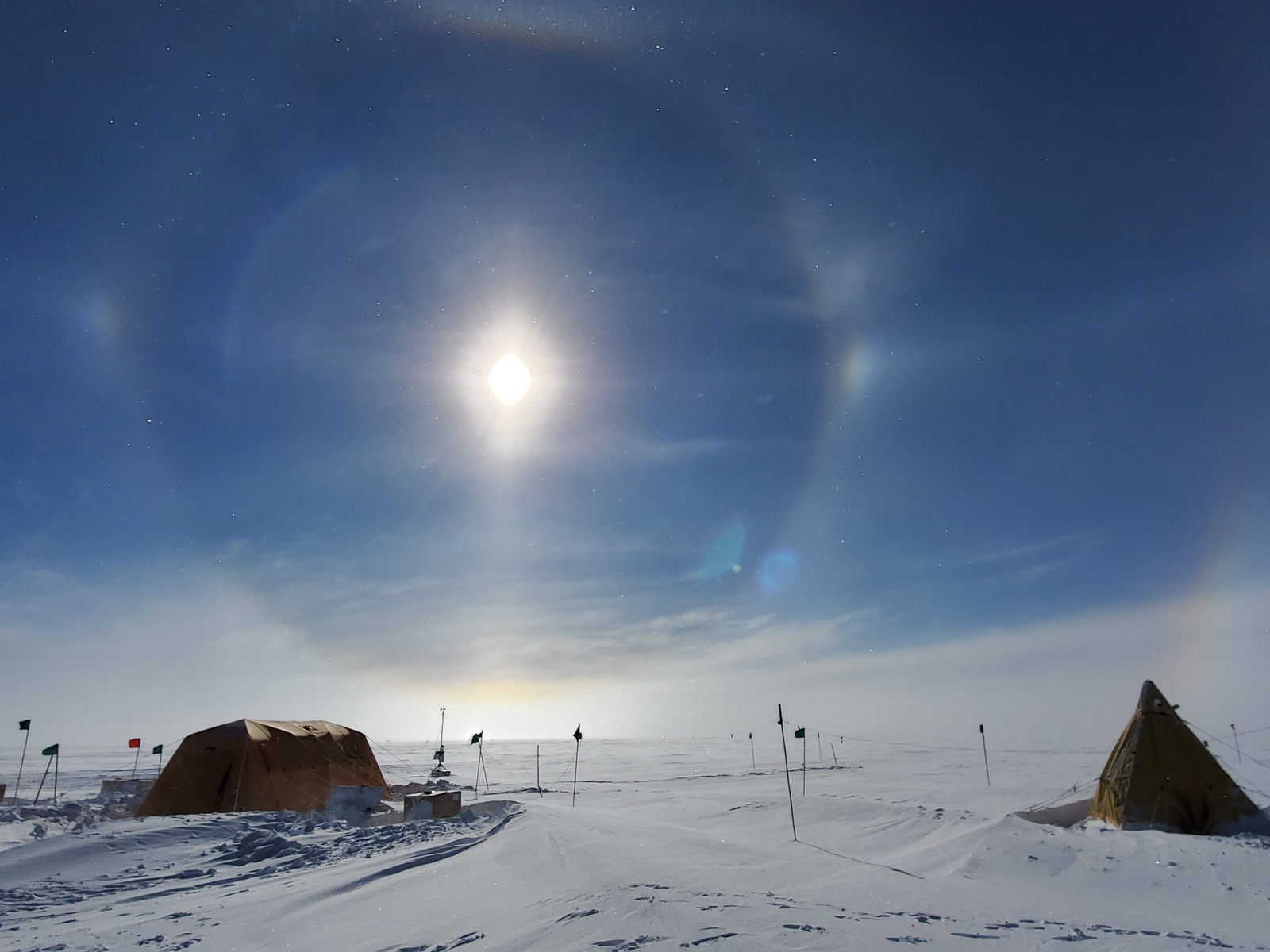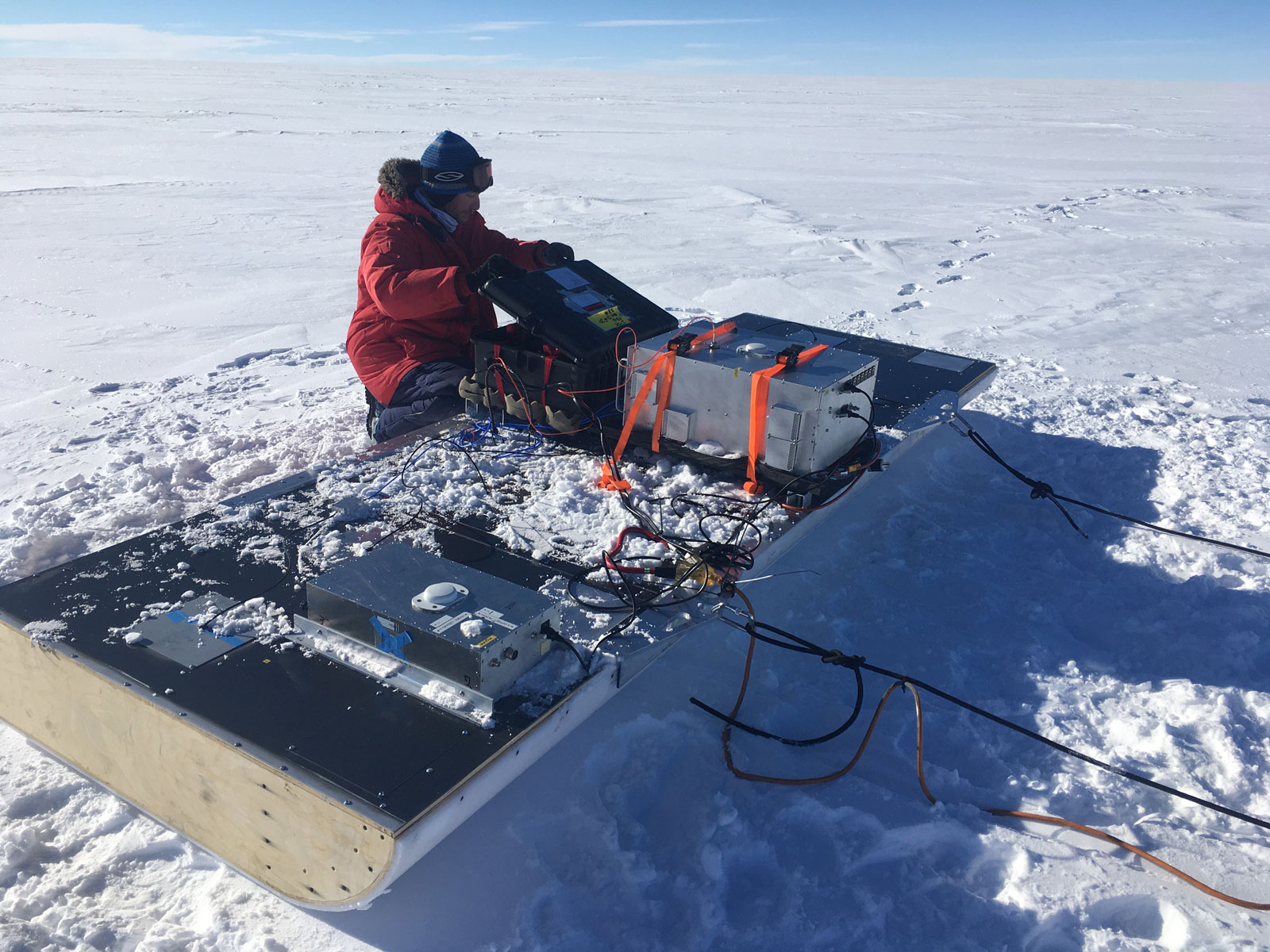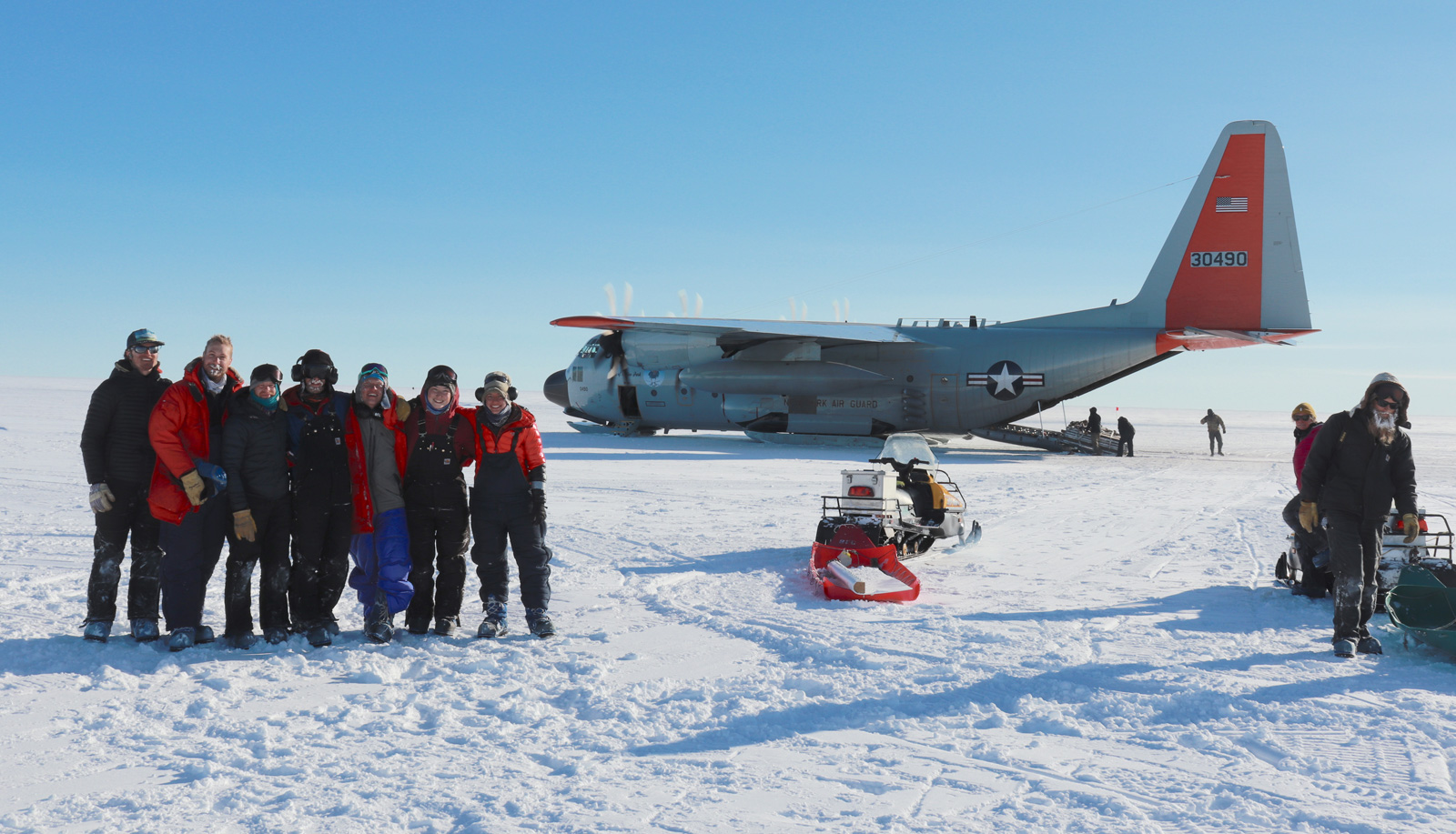
Professor Nick Holschuh in Antarctica
Geology professor Nick Holschuh’s latest research project is on ice right now. On the Antarctic Ice Sheet, to be exact.
Holschuh has joined forces with a group of fellow experts from different institutions across the country to find, extract and study ice 1.5 million years or older. The Oregon State University-led collaboration, titled the Center for Oldest Ice Exploration, or COLDEX, received a prestigious five-year, $25 million Science and Technology Center award from the National Science Foundation (NSF) last month. Holschuh—who is also a part of a recently announced, NSF-funded data science research group titled the Institute for Harnessing Data and Model Revolution in the Polar Regions—is the only researcher from a liberal arts college involved in the partnership.
“As we continue to investigate the ancient Earth, we are learning more and more about how ice can affect Earth’s climate more broadly. COLDEX and the NSF funding for it will enable us to gain even more insight into the role of ice and glacier change,” he notes, adding that while the initial award is $25 million over five years, it can be renewed for a second five years and another $25 million. “I’m thrilled to be a part of a project with such global implications.”
“Amherst is so fortunate to have talented scholars like Nick, who are researching such fundamental questions about the planet’s history and possible futures, on our faculty,” says Provost and Dean of the Faculty Catherine Epstein. “What is especially exciting about Nick’s involvement in a large collaborative research project like COLDEX is the opportunities our students will have to experience this kind of research firsthand, and to be inspired by it.”

The camp in Antarctica
Holschuh’s research has long focused on the Antarctic Ice Sheet. He began his career analyzing data collected by NASA airborne campaigns over Antarctica, and is now expanding that work using both satellite data and ground-based radar data that he has collected over several trips to the continent. That radar data enables him to make inferences about various important properties of the ice, as well as reconstruct the flow history of the system. His contribution to the COLDEX project will involve this approach.
For years, research has been conducted on the Ice Sheet because it contains a treasure trove of microscopic matter and gases that became trapped in the ice during 100,000-year warming and cooling cycles throughout the Earth’s recent past. For some time, scientists have drilled “cores,” or long cylinders, of ice from below the subsurface of the continent to study and date. These cores contain layers of ice that can be tied to particular years and eras. Because snow is always falling and new layers always forming, Antarctica contains a “continuous record” of Earth’s climate history.
“When we study Earth’s past, we use what we call ‘proxy records,’ because we can’t go back in time and measure things directly,” Holschuh explains. “The best tools we’ve got are materials that change in response to past temperature or atmospheric chemistry and record the environmental conditions of the time they formed. Isotopes in ice cores are one of our best proxies for past temperature, and gases trapped in bubbles in ice cores are as good as if we sent a time machine back a million years and directly sampled the atmosphere. So if we want to understand climate change, our best records of two major components of it—carbon dioxide and temperature—can be found in Antarctic ice cores.”

Extracting ice samples
At present, the oldest continuous record that scientists have been able to extract from the continent is a core that dates back 800,000 years. The COLDEX researchers’ objective is to drill miles down into the subsurface of the ice and extract a core at least two times older than that core. Based on initial research, scientists believe they have found such ice trapped in the mountains around Antarctica.
That’s where Holschuh comes in. His and his team’s job is threefold: to determine the history of ice flow that led to the modern Antarctic Ice Sheet, estimate whether the physical conditions at particular drill sites favor the preservation of the 1.5 million-year-old ice they aim to extract, and evaluate whether or not the climate record of those particular ice cores will be complete and interpretable by scientists. Holschuh and other geophysicists involved with the project will search for such areas using radar mounted on planes that will image the subsurface of the ice from thousands of feet above the ground and then analyze the information they gather in order to point their COLDEX colleagues to patches they hypothesize have long, continuous ice records.
“For the past 1.2 million years, Earth has been swinging from warm to cold, slowly re-entering an ice age every 100,000 years,” he says. “Humans, however, are breaking the cycle through our burning of fossil fuels, putting us on a trajectory that brings us closer to the hot-house climates that predate the ice age cycles. 1.2 million years ago we were in a warmer world, with an atmosphere that we think looks a lot like ours today, and the Earth’s climate behaved in fundamentally different ways. Studying a continuous ice core that spanned that climate transition tells us not just about our past, but might even help us predict and reshape our future.”

In addition to the research aspect, Holschuh says that he is excited to participate in COLDEX because it presents him with the opportunity to share his passion for science (glaciology and geophysics specifically) with his students and encourage their interest in science, technology, engineering and math (STEM) generally. To that end, one major portion of the grant will make funding available to support research experiences for undergraduate students and students from underrepresented groups in the STEM fields.
“Right now we are taking the first steps in a decade-long scientific mission that spans institutions across the U.S.,” he says. “It’s possible for an Amherst student who works with me on this project to go on to graduate school and become a professor before COLDEX is done. That student could work with experts in geophysical methods, ice core geochemistry within COLDEX and even end up sharing findings and knowledge with policymakers and members of the general public. It’s incredible to think of the impact that this project could have, both on developing scientists, and on our understanding of Earth’s climate.”
In addition to Amherst and Oregon State, higher education partners on the project include Brown University; Dartmouth College; Princeton University; the University of California, Berkeley; UC Irvine; UC San Diego; University of Kansas; University of Maine; University of Minnesota, Duluth; University of Minnesota, Twin Cities; University of Texas; and University of Washington. Other collaborators are the American Meteorological Society (AMS), Inspiring Girls Expeditions, Earth Science Women’s Network and Alaska Native Science and Engineering Program.

Holschuh and the research team
Photos courtesy of Nick Holschuh